How do binoculars work? We reveal the magic of magnification
We focus in on how binoculars work, bringing clarity to the role of lenses, prisms and eyepieces
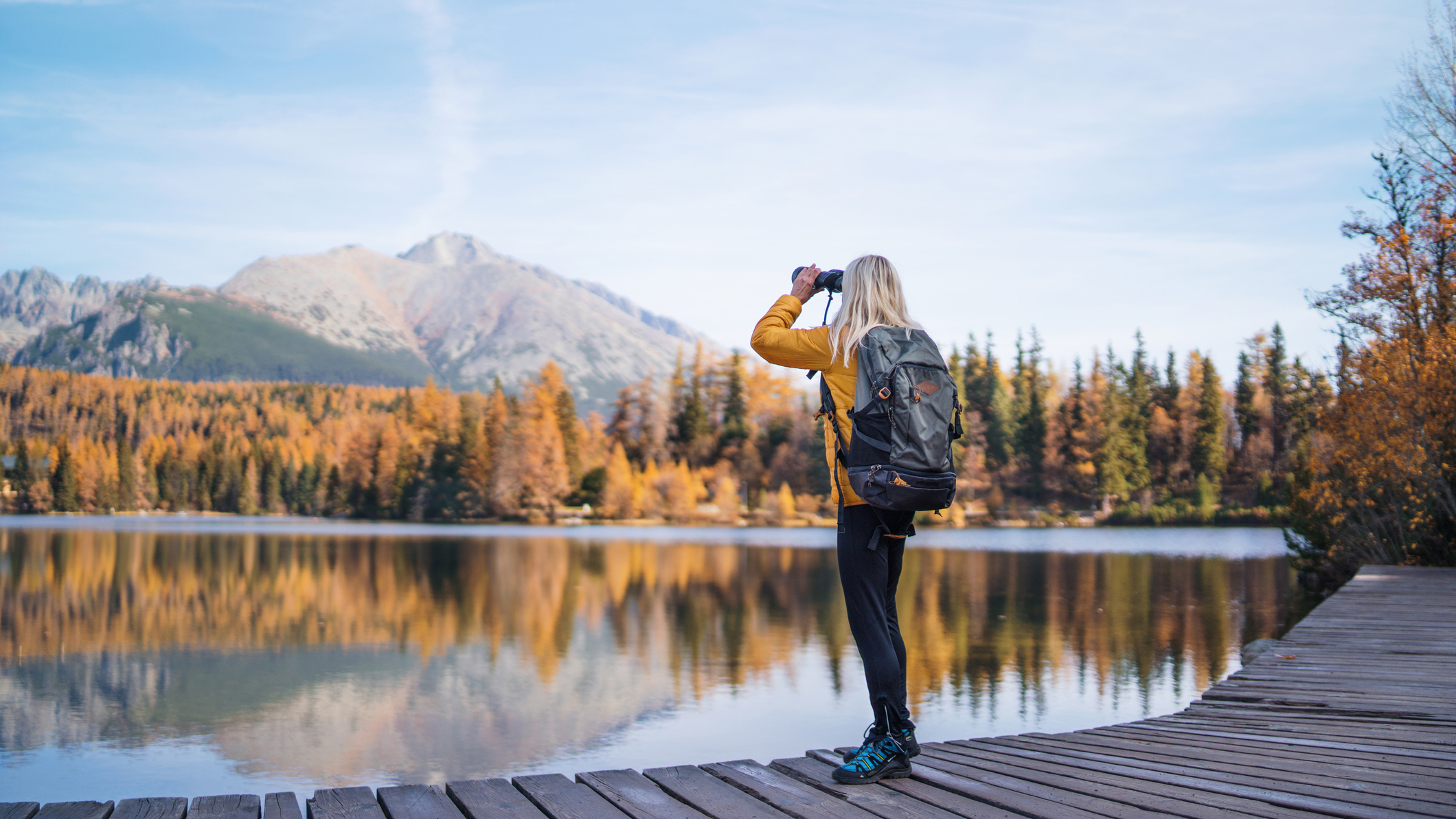
In essence a handheld pair of little telescopes, binoculars are wonderful little gadgets that allow use to get closer to nature, without actually getting closer to nature. Yes, the essential tool of both the passionate birder and the sleep-deprived police officer on a stakeout, binoculars allow us to see distant objects up close, whether they’re soaring eagles or people getting up to things they shouldn’t be.
But, how many of us could confidently answer the following question: how do binoculars work? If you thought a Porro Prism was an Instagram filter and an eye piece was what S.H.I.E.L.D. director Nick Fury wears, you could probably do with reading this guide.
In short, binoculars work by capturing light in a pair of tubes and enlarging the image by a certain degree of magnification. At one end of the tube, light is captured by the objective lens, it’s reflected and rotated by a pair of prisms, before meeting the eye at the eyepiece where the image is magnified. The best binoculars produce wonderfully detailed and clear images of your chosen target. So, let’s delve into how all this words in more detail.
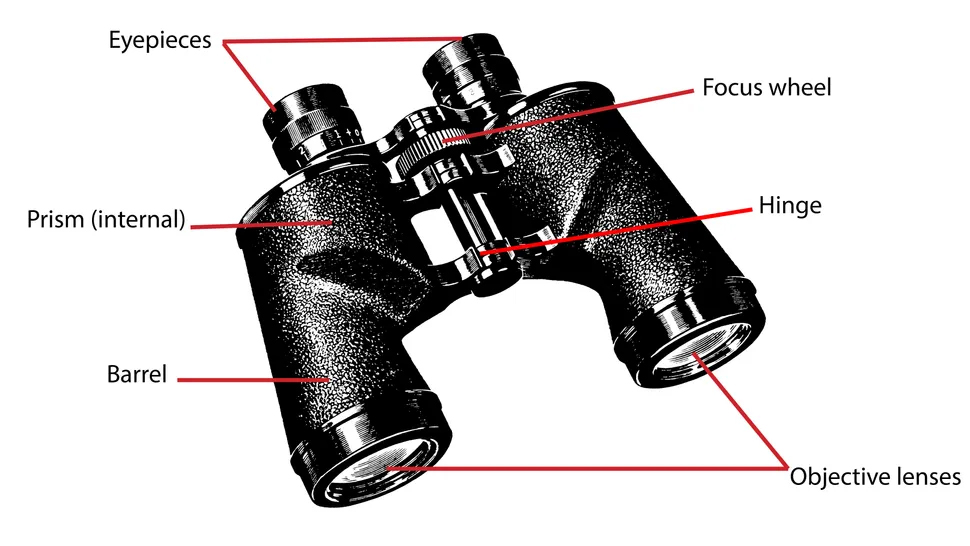
Being objective
Cool fact: the word lens comes from the Latin for lentil, due to the similarities in shape between a lens and the ever-popular legume. The convex (thick in the middle and thin on the outside) lenses we’re interested in here are the objective lenses. These are the large, curved pieces of glass housed on the opposite end of binoculars to where you pop your eyes.
The job of the objective lens is to collect light. If you know what the numbers mean on a pair of binoculars, you’ll know that the larger the objective lens, the more light it lets in. On a standard pair of 8x42 bins, the 42 stands for the diameter of the objective lens in millimeters.
Interestingly, if you double the size of the objective lens, you actually quadruple the amount of light captured, so the effect is exponential. This is why binoculars designed for use in low light have large objective lenses and why space telescopes have massive ones. One thing to note is that this isn’t how night vision binoculars work though – there’s even more clever tech at play in there, but that’s another story (or guide for that matter, see above).
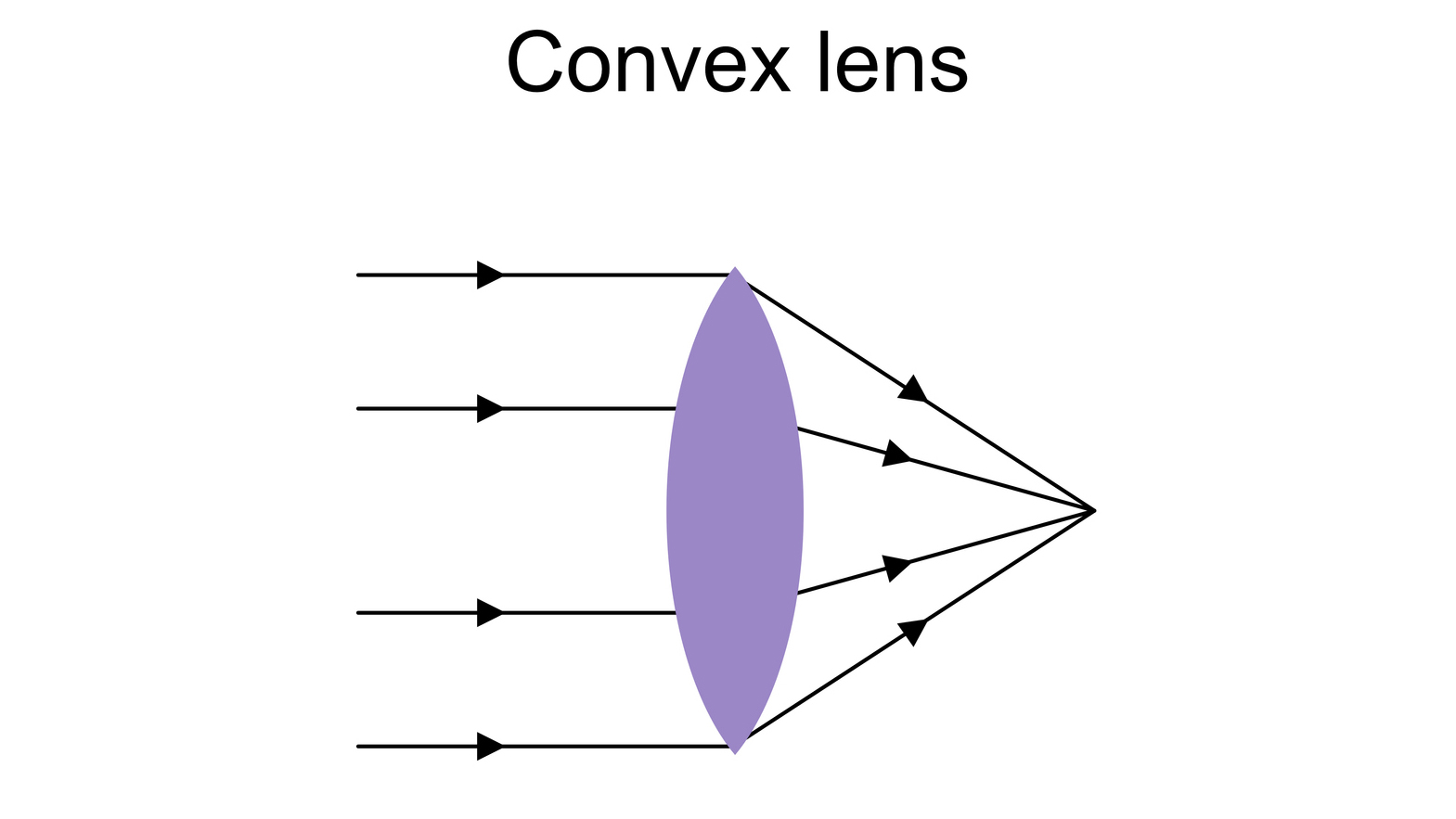
Light hits the curved surface of the lens and is refracted through the tube. Refraction is what happens when light bends through a medium, such as air, water or glass. Consider how objects appear to be magnified underwater, this is refraction at work in realtime.
All the latest inspiration, tips and guides to help you plan your next Advnture!
Prism sentences
Due to the way light is reflected through the objective lens, the image gets flipped upside-down. Not ideal. Can you imagine the confusion of seeing a horseshoe bat hanging the right way around? That would really mess with our heads!
The same is true of the lenses in our eyes, our corneas, which focu upside-down images onto our retinas. Amazingly, our brains know to reinterpret the image and flip it back the right way around.
Binoculars don’t have brains (not yet anyway), so an alternative solution to the upside-down image problem was needed. This is where prisms come in. A prism is a solid glass geometric object that, in the case of binoculars, is used to rotate the image by 90 degrees. Of course, to turn an upside-down image the right way around, we need 180 degrees of rotation. The answer to this quandary is using two prisms.
There are two types of prism configurations that are used in binoculars, Roof prisms and Porro prisms.
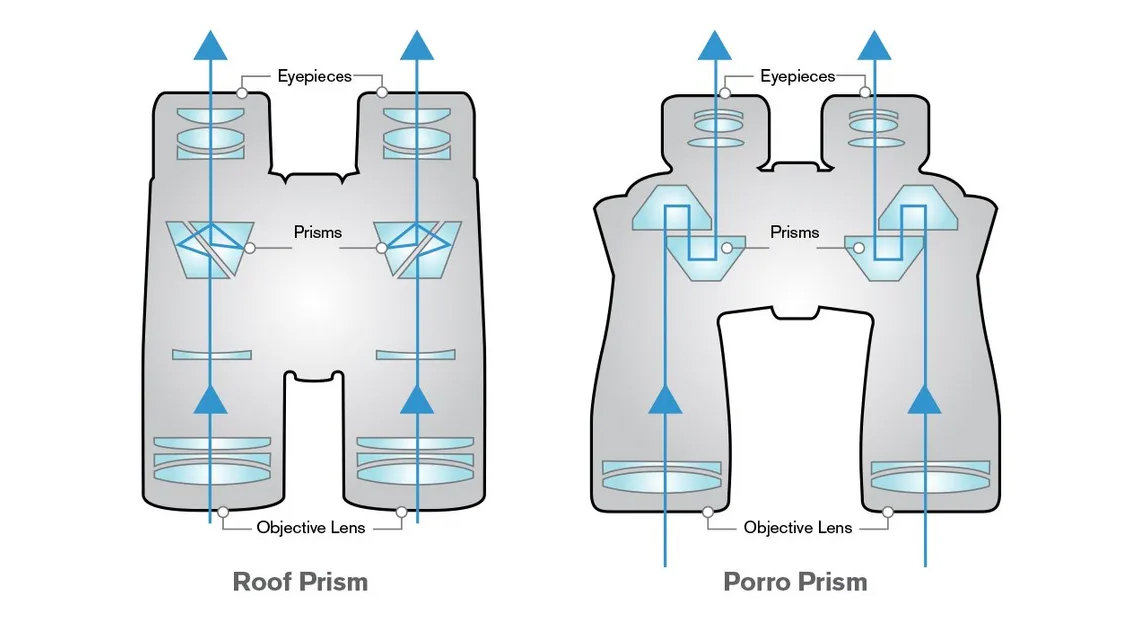
Roof prism binoculars involve two prisms arranged in a straight line. This means the three key optical components – the objective lenses, the prisms and the eyepieces – are also arranged in a line. Thanks to this, roof prism binoculars are very compact, making them ideal for activities like birdwatching. The prisms reflect the light back and forward internally, until the now corrected image exits the system on the same trajectory as it entered.
Porro prisms are named after their Italian inventor, Ignazio Porro, who patented his design in 1854. It involves two right-angle prisms, side by side, that reflect the light twice by 90 degrees. One advantage is that the light goes through fewer reflections compared to Roof prisms. Every time light is reflected off a surface it loses some of its intensity. Therefore, a system that contains as few reflections as possible will give a brighter final image.
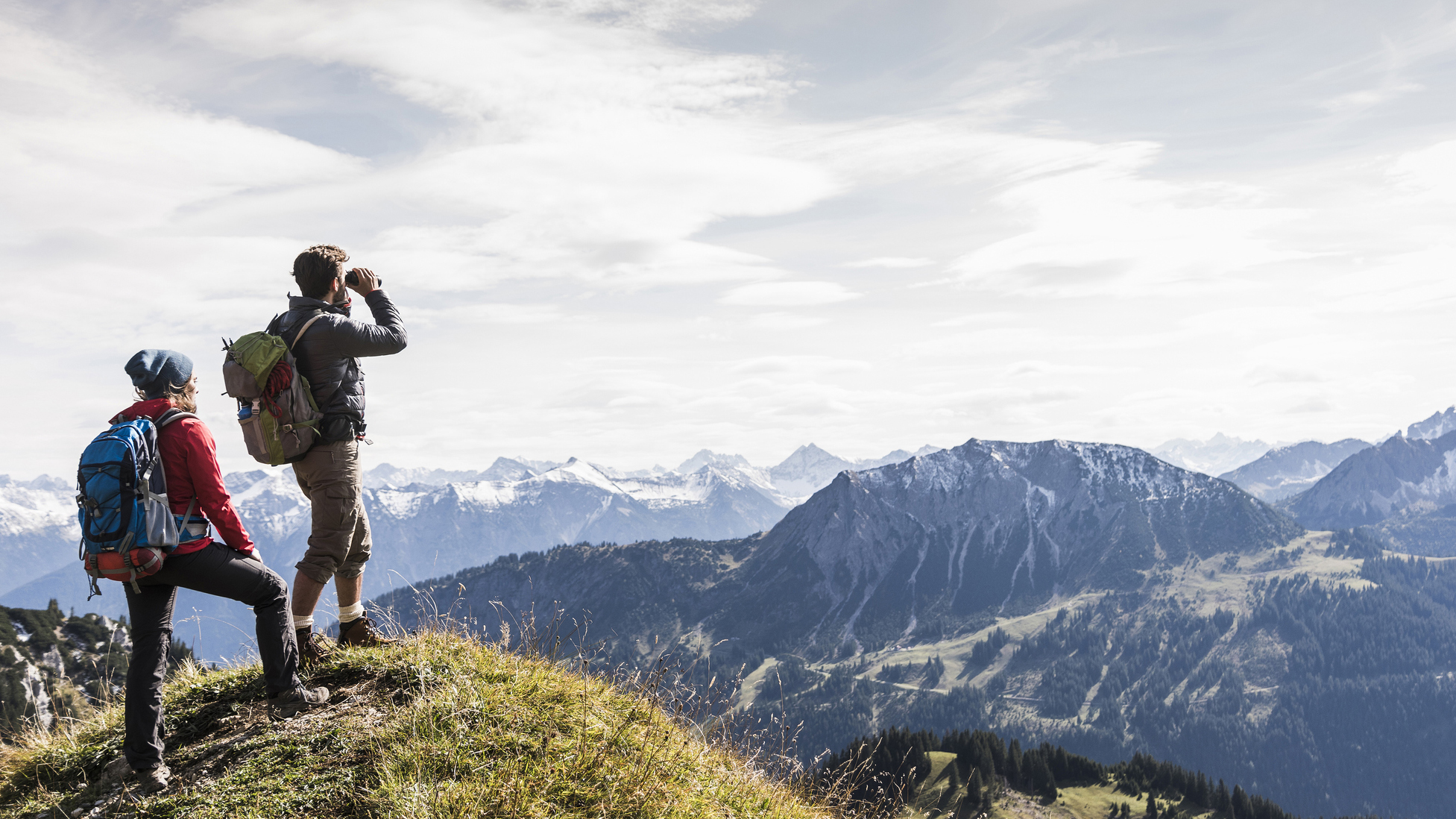
As well as this, Porro prism binoculars enjoy a wider field of view with more depth of field. They’re less expensive than bins with Roof prisms too, although they’re not as compact due to the way Porro prisms are aligned.
Find your focus
After the prisms, the image arrives at the eyepiece, a convex lens that magnifies the image, just like a magnifying glass. The amount of magnification a pair of binoculars provides is indicated by the first number it’s labelled with. So, when viewed with a pair of 8x42 bins, an animal that’s 80 meters away would appear to be only 10 meters away.
To get a clear, focussed image, the focal point of the light rays leaving the eyepiece has to meet the retina in the human eye. This is where the focus wheel on a pair of binoculars comes into play. Adjusting the wheel changes the distance between the prisms and the eyepiece and, therefore, the eventually focal point of the refracted light.

As well as this, there’s the diopter focus wheel, which focusses the right barrel of the binoculars only. This is so that the bins can compensate for any differences between your eyes. If two or more people are using the same pair, this setting may need to be changed between each person.
Alex is a freelance adventure writer and mountain leader with an insatiable passion for the mountains. A Cumbrian born and bred, his native English Lake District has a special place in his heart, though he is at least equally happy in North Wales, the Scottish Highlands or the European Alps. Through his hiking, mountaineering, climbing and trail running adventures, Alex aims to inspire others to get outdoors. He's the former President of the London Mountaineering Club, is training to become a winter mountain leader, looking to finally finish bagging all the Wainwright fells of the Lake District and is always keen to head to the 4,000-meter peaks of the Alps. www.alexfoxfield.com

